(1908-1997)

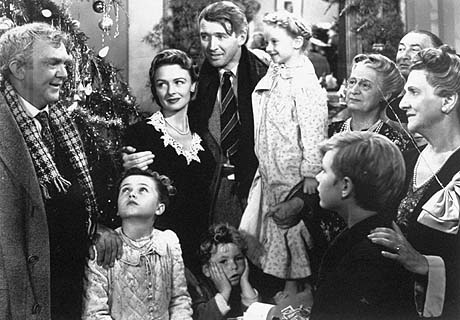
Jimmy Stewart is one of the few male actors whose performances can make me cry. He displayed raw emotion in so many of his films. His performances were never forced or contrived. There is an emotional honesty in every screen persona. Compare his two masterpieces - Mr. Smith Goes to Washington and Vertigo. He provides two very different performances. In 'Smith' he is wide-eyed innocence that finally sees a corrupt world. In Vertigo he is obsession and anxiety brought on by a corrupt world. He is heroic in 'Smith' and tragic in Vertigo. To view these two films is to see the range of the great legend.
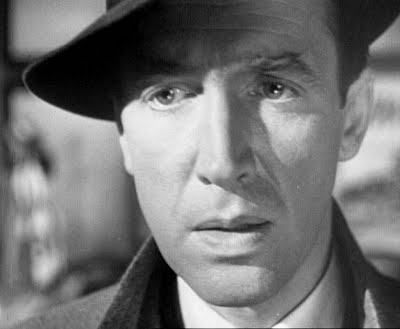
At the end of the article I copied from The New York Times (all rights reserved to the New York Times) is a list of some of his memorable films. I would toss in Rope to complete his Hitchcock collaboration. On the day of his death, Stewart was called "a national treasure" by President Clinton. The news of his death was presented first on many newscasts including a 5 minute opening report on CNN Headline News. When we lose a great one like Stewart it is right and proper to treat it as an event worthy of being first in the news. Not every actor's death is as deserving of such treatment but then again, few become icons of Jimmy Stewart's stature.
When great actors like Jimmy Stewart go to the big silver screen in the sky, my friends and I like to gather to watch their memorable films. A good place to start is with You Can't Take it With You, Mr. Smith Goes to Washington, It's A Wonderful Life, Rear Window, The Man Who Knew Too Much, Vertigo, and The Man Who Shot Liberty Valance. You can't go wrong with these great flicks.
THE MOVIE PAL
![]()
(The following is the obituary from The New York Times of July 3, 1997)
James Stewart, whose movie portrayals of decent, idealistic and naive small-town Americans made him a beloved national icon, died Wednesday at his home in Beverly Hills, Calif. He was 89.
He died from a blood clot in his lung, The Associated Press reported.
Stewart's performances in some 80 movies earned him every major award bestowed for his craft, and consistent acclaim and popularity for more than half a century.

He was the last of that rare breed of male stars whose careers certified the star system as it operated virtually from the beginning of the sound era. Actors like Stewart, Spencer Tracy, Gary Cooper, Clark Gable, Cary Grant, John Wayne and Henry Fonda were larger than life, and because the fusion of the performers' public and private personalities created something bigger than the sum of the two parts, something mythical.
The lanky actor with unruly hair and an ungainly stride had a boyish grin and an engaging manner. The Stewart way of speaking -- laconic, with a hesitant, nasal drawl -- is instantly recognizable by virtually every American. His early screen image, like his personal life, epitomized a Middle American ideal in a confusing, sophisticated world.
"America lost a national treasure today," President Clinton said Wednesday. "Jimmy Stewart was a great actor, a gentleman and a patriot."
His archetypal role (and his own favorite) was that of George Bailey, the small-town banker in "It's a Wonderful Life," Frank Capra's moralistic fantasy in which the hero is rescued from suicide by a pixieish angel who shows him how much meaner life would have been in his hometown without him. The 1946 feature-length Christmas card was a failure among postwar audiences, who dismissed it as overly sentimental, but in later decades it became one of the most popular movies ever made and a holiday staple on television.

After viewing "It's a Wonderful Life," President Harry S. Truman concluded, "If Bess and I had a son, we'd want him to be just like Jimmy Stewart."
But, as Stewart matured, the diffident innocents he played in the late 1930s and '40s gave way to more subtle and complicated roles -- troubled, querulous protagonists torn between firmness and vulnerability, roles in conflict with his accepted image.
Stewart's subtle and seemingly effortless work prompted the critic Vincent Canby of The New York Times to hail him in 1990 as a great behavioral actor who absorbed each role into his own physical frame, shaping the mannerisms, the voice and even the intelligence to coincide with those of his own persona. "This he does with such simplicity and ease that, for many years, the initial response was to say that what he does isn't acting, followed up by the damp, desperate criticism that he is always the same," Canby said.
The roles for which he was best remembered include a naively heroic young senator in "Mr. Smith Goes to Washington" (1939), a part that earned him major stardom; a forthright reporter redeeming a headstrong heiress (Katharine Hepburn) in "The Philadelphia Story" (1940) and a relentless defense attorney in "Anatomy of a Murder" (1959).
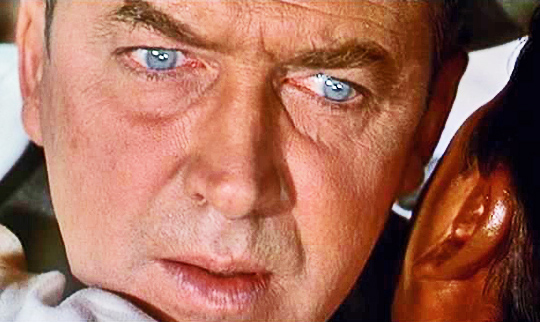
Also in the Stewart gallery of folk heroes were a gun-shy marshal who tamed a town -- and Marlene Dietrich -- in "Destry Rides Again" (1939); Monty Stratton, the Chicago White Sox pitcher who returned to the mound after losing a leg, in "The Stratton Story" (1949); a beloved big-band leader in "The Glenn Miller Story" (1954) and Charles A. Lindbergh, a boyhood hero, in his solitary 1927 trans-Atlantic flight in "The Spirit of St. Louis" (1957).
Later in his career, a tougher, more worldly Stewart emerged in such Anthony Mann westerns as "Winchester '73," "The Far Country," "Bend of the River," "The Naked Spur" and "The Man From Laramie." Alfred Hitchcock used him against type in such films as "Rope" and "The Man Who Knew Too Much" and especially as a voyeur photographer in "Rear Window" and as a retired detective entranced by two forms of a mythic Kim Novak in "Vertigo."

When interviewed about his techniques, the self-effacing actor replied characteristically, "I don't act, I react," and described himself as an "inarticulate man who tries," without having "all the answers, but for some reason, somehow, I make it." He offered his personal criterion for success: "If you can do a part and not have the acting show."
His modest appraisal was challenged by Donna Reed, his co-star in "It's a Wonderful Life." "He's so natural, so realistic, that I never knew whether he was talking to me or doing the scene" she observed. "He's the most demanding actor I've ever worked with."
Joan Crawford, another co-star, praised Stewart as an "endearing perfectionist" with "a droll sense of humor and a shy way of watching you to see if you react to that humor."
Weighing Stewart's work opposite such matchless actresses as Margaret Sullavan in Ernst Lubitsch's "Shop Around the Corner," Jean Arthur in Capra's " Smith," Ms. Hepburn in George Cukor's "Philadelphia Story," Marlene Dietrich in George Marshall's "Destry Rides Again" and Grace Kelly in "Rear Window," Canby said:
"He "reveals a quality that at first seems out of sync with the shy, stammering personality favored by nightclub imitators. He is debonair. He has the same humor and lightness of touch that Fred Astaire expresses only through dance. Stewart is debonair when dousing Miss Dietrich and Una Merkel with a bucketful of water ('Destry Rides Again') or confined to a wheelchair with one leg in a plaster cast ('Rear Window'). He is debonair even when wrestling with terrible guilt and a sense of loss in 'Vertigo.' Also like Astaire when he dances, Stewart is best seen on the screen in full figure, with all of the lean 6-foot-3 1/2-inch man captured in a single frame. He acts with his whole body. The slight stoop and the way his wrinkled jacket hangs from his shoulders are as integral to his performance in 'Harvey' as any of playwright Mary Chase's lines."

One of the actor's most admired performances was that of the gently eccentric tippler Elwood P. Dowd in "Harvey," whose companion was the title character, a giant, invisible rabbit. The actor played the film role in 1950 after appearing in the whimsical comedy on Broadway in 1947, then played the role again in a triumphant 1970 revival in New York and London that co-starred Helen Hayes.
Stewart appeared in half a dozen Broadway plays and in occasional television dramas. Also on television, he starred in two of his own series in the early 1970s, first as a family patriarch and college professor in "The Jimmy Stewart Show," a bucolic sitcom, and then as "Hawkins," a shrewd country lawyer.
Oscars, Honors, Thanks and Advice
Stewart received the American Film Institute's eighth life-achievement award in 1980, a Kennedy Center Honor in 1983 for lifetime contributions to the performing arts, a special 1984 Academy Award for "50 years of meaningful performances, for his high ideals, both on and off the screen," a 1985 Presidential Medal of Freedom, which is the nation's highest civilian honor, and the 1990 annual tribute by the Film Society of Lincoln Center.

In receiving the honorary Oscar to a standing ovation, Stewart singled out for special thanks Capra and other directors "who so generously and brilliantly guided me through the no man's land of my own good intentions."
He had also won an Academy Award for the best performance by an actor in 1940 for "The Philadelphia Story" and four other Oscar nominations, for " Smith Goes to Washington," "It's a Wonderful Life," "Harvey" and "Anatomy of a Murder."
Among many other honors were film festival and critics' citations, a Tony Award and the 1968 Screen Actors Guild Award for "fostering the finest ideals of the acting profession."
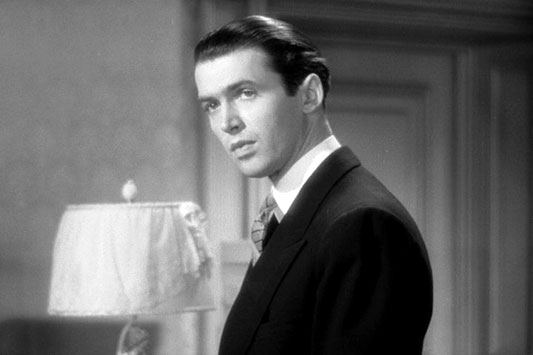
Young performers, he believed, should start on the stage and get as much theater experience as they can in stock companies and road shows. Adapting to a live audience, he advised, is an actor's toughest hurdle.
After getting his professional start on Broadway, he honed his craft in Hollywood's big-studio era of the 1930s and '40s, whose leaders he credited with great judgment, the courage to take chances and deep affection for movie-making. The studio system, he said, was "a wonderful training ground for actors and actresses."
"I came out here as a contract player at MGM, and I went to work every day," he said. "It might be a big part in a little picture, or a little part in a big picture. You learned your craft by working at it. You crawled before you walked."
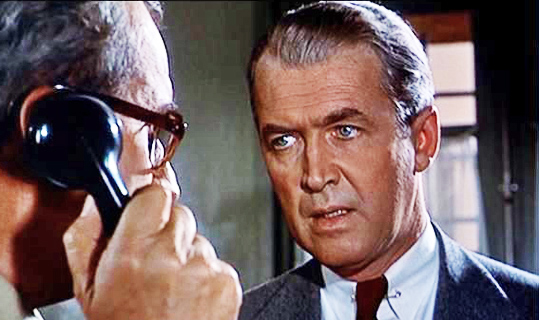
The War Effort: On the Front Lines
Early on, Jimmy Stewart became a symbol of patriotism as the first top Hollywood actor to enter the service in World War II. Determined to become a combat pilot, he first logged 300 hours of flying because at the age of 33 he was too old to be an aviation cadet. He put on 10 pounds to meet the Army's minimum weight requirement for his tall, thin frame.
Stewart was inducted in March 1941, nine months before the Japanese attack on Pearl Harbor and the United States' entry into the war. He qualified quickly as a pilot. Assigned to the 2nd Combat Wing of the 8th Air Force in England, he was successively the operations officer, chief of staff and squadron commander.
He eventually led 20 bombing missions over Germany, hitting targets in Bremen, Frankfurt and Berlin. He won a cascade of decorations, including the Distinguished Flying Cross twice, one of them for piloting the lead plane in a spectacular raid on key aircraft factories in Brunswick, Germany. He also received the Air Medal, a succession of oak leaf clusters, six battle stars and the Croix de Guerre with Palm.
When the war ended, Stewart was mustered out a colonel but remained in the Air Force Reserve and, in 1959, the Senate approved his promotion to brigadier general, making him the highest-ranking entertainer in the U.S. military. He retired from the Reserve in 1968.

After a long tenure as Hollywood's most eligible bachelor, Stewart was married in 1949, at the age of 41, to Gloria Hatrick McLean, a former model. They lived for decades in a Tudor-style house in Beverly Hills, at first with two boys, Ronald and Michael, from Mrs. Stewart's previous marriage, and then with their own twin girls, who were born in 1951.
1st Lieut. Ronald W. McLean was killed in Vietnam in 1969. Mrs. Stewart died in 1994. Stewart is survived by his other stepson, Michael, of Phoenix, and his daughters, Judy Merrill of San Francisco and Kelly Harcourt of Davis, Calif.
The actor was born James Maitland Stewart on May 20, 1908, in the western Pennsylvania town of Indiana, to Alexander Stewart and the former Elizabeth Ruth Jackson, who were of Scotch-Irish descent. The Stewart family had owned and managed a prosperous hardware store for half a century, and his father served in both the Spanish-American War and World War I.
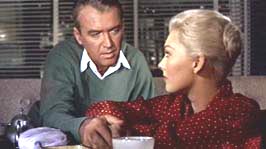
Jimmy and his two younger sisters, Mary and Virginia, were taught the value of responsibility, prudence and frugality. When not doing chores, the spindly, spectacled youth wrote and staged plays and played the accordion.
At prep school, the Mercersburg Academy in south-central Pennsylvania, he went out for football, track, dramatics and music. During summer vacations he was a construction laborer. Then, at Princeton, he joined the Triangle Club, rising quickly from accordionist to leading roles in musicals. He graduated in 1932 with a bachelor's degree in architecture.
An Alternative To Architecture
The Depression era offered little demand for architects, so he tested his avocation, accepting an invitation from a college friend, Joshua Logan, to join the University Players at Falmouth, Mass., on Cape Cod.

The summer stock company included Henry Fonda, who was to become a lifelong friend even though Stewart was a conservative Republican and Fonda a fervently liberal Democrat. The friendship endured, Stewart said in 1983, because "50 years ago we agreed not to discuss politics."
Stewart won his first major role on Broadway in 1934, as a gallant soldier-guinea pig in "Yellow Jack," Sidney Howard's drama about research on yellow fever, and then played a youth stunned by the adultery of his mother (Judith Anderson) in "Divided by Three." Brooks Atkinson of The New York Times acclaimed the neophyte's performance as "a minor masterpiece."

In 1935 he won a contract with MGM, where he made his feature debut as a cub reporter in "The Murder Man." The crime melodrama starred Spencer Tracy, who spotted the newcomer's tenseness, told him to "forget the camera is there," and later recalled how "that was all he needed; in his very first scene he showed he had all the good things."
Stewart's intelligent, deceptively casual acting in two dozen movies over the next five years earned him stardom. Among these early films, mostly comedies and romantic dramas, were "Wife vs. Secretary," "Born to Dance" (in which he struggled gamely to sing Cole Porter's "Easy to Love" to Eleanor Powell), "Navy Blue and Gold," "Vivacious Lady," "The Shopworn Angel," "You Can't Take It With You," "Made for Each Other" and "No Time for Comedy."

Returning from war in late 1945, Stewart insisted that his military exploits not be publicized. He avoided studio contracts and freelanced, earning increasingly high salaries and becoming a pioneer of the percentage deal, under which he reportedly received up to half the profits of his movies.
Honing a Bumpkin To a Harder Edge
On screen, he shook off his country-boy manner and assumed a new persona, a complex, sometimes cryptic image that was shaped in collaborations in the 1950s and '60s with directors like Hitchcock, Mann and John Ford.
The actor played a cold bounty hunter in Mann's "Naked Spur" (1953), a dedicated reporter in "Call Northside 777" (1948), a clown wanted for murder in "The Greatest Show on Earth" (1952), the photographer turned sleuth in Hitchcock's "Rear Window" (1954), the obsessive romantic in Hitchcock's "Vertigo" (1958) and a cynical marshal in Ford's "Two Rode Together" (1961).

Other later movies included "Broken Arrow," "The Far Country," "Strategic Air Command," "The FBI Story," "The Man Who Shot Liberty Valance," "How the West Was Won," "The Flight of the Phoenix" and "The Shootist," a 1976 valedictory to the career of a longtime friend, John Wayne.
Stewart shunned publicity, but was invariably relaxed and good-humored with interviewers. In later years, he was a leading spokesman for conservative political and economic causes and a frequent campaigner for Republican political friends like George Murphy, the actor turned U.S. senator, Richard M. Nixon, and Ronald Reagan.
One of Hollywood's most astute businessmen, he became a multimillionaire, with diversified investments including real estate, oil wells, a charter-plane company and membership on major corporate boards.
On television he appeared in commercials for several years for Firestone tires under a contract said to be worth $1 million. Questioned about it, a spokesman said Stewart had "warm personal relations with the Firestone family" and admiration for their charitable gifts. In the late 1980s and early '90s, his grandfatherly inflections were heard on television commercials for Campbell's Home Cookin' Soups.

His Own Touch Of the Poet
In 1989, the actor broke into print with "Jimmy Stewart and His Poems." The 32-page book of verse, which became a best seller, included a tribute to one of his dogs that read in part:
Discipline was not his bag But when you were with him things sure didn't drag. He'd dig up a rosebush just to spite me, And when I'd grab him, he'd turn and bite me.
In later years Stewart became an advocate of protecting and preserving classic American movies against computerized coloring or re-editing for television.
In 1988, he testified before Congress on behalf of a bill that later established a national panel to designate major films for conspicuous labeling to alert the public that they had been colored or otherwise altered.
His favorite movies were westerns, he said, "because they're told against the background of a very dramatic period in our history" and "give people a feeling of hope, an affirmative statement of living."

As he approached his 80th birthday, he was asked how he wanted to be remembered. As someone, he said, who "believed in hard work and love of country, love of family and love of community."
Mr. Stewart Went to Hollywood
James Stewart made more than 80 films, ranging from frothy comedies to westerns and dramas of suspense. These are among the most memorable.

You Can't Take It With You (1938)
Mr. Smith Goes to Washington (1939)
Destry Rides Again (1939)
The Shop Around the Corner (1940)
The Mortal Storm (1940)
The Philadelphia Story (1940)
It's a Wonderful Life (1946)
Call Northside 777 (1948)
The Stratton Story (1949)
Winchester '73 (1950)
Harvey (1950)
The Naked Spur (1953)
The Glenn Miller Story (1954)
Rear Window (1954)
The Man Who Knew Too Much (1956)
The Spirit of St. Louis (1957)
Vertigo (1958)
Anatomy of a Murder (1959)
The Man Who Shot Liberty
Valance (1962)
Cheyenne Autumn (1964)
The Shootist (1976)
![]()
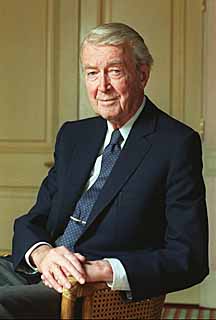
![]()
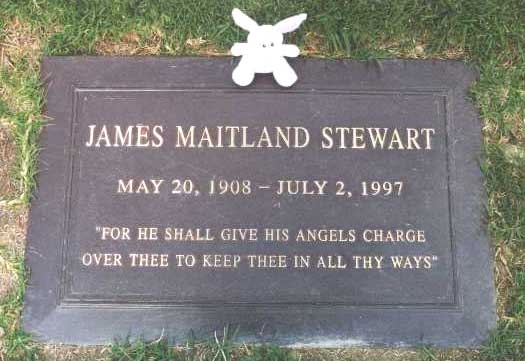
![]()
The Movie Pal
(www.themoviepal.com)
The Movie Pal - main site. The movie site for all your Hollywood needs.
![]()
Prayers and Hugs
(ajb1776.tripod.com/prayers.html)
My personal site on prayer and faith. Please visit. It's good for the soul.
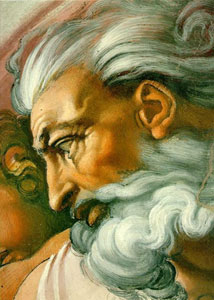
![]()
American Freedom 1776
(www.americanfreedom1776.tripod.com)
My personal site on the American Revolution. Please visit. It's good for all students.

![]()
Abraham Lincoln
Epic President
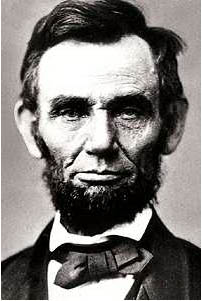
Buy magnets and buttons with Abraham Lincoln.
Perfect for history buffs.
Buying Lincoln souvenirs finances The Movie Pal.
THANK YOU!
![]()
Alexander Bernal
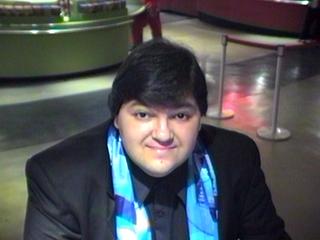
I am Alexander Bernal, The Movie Pal.
Please visit my personal website.
THANK YOU!
![]()
